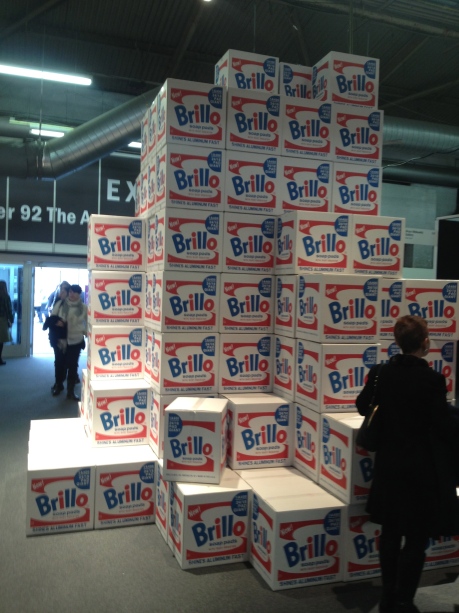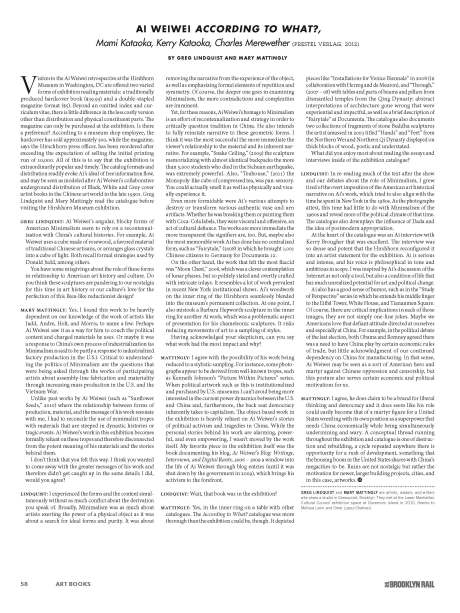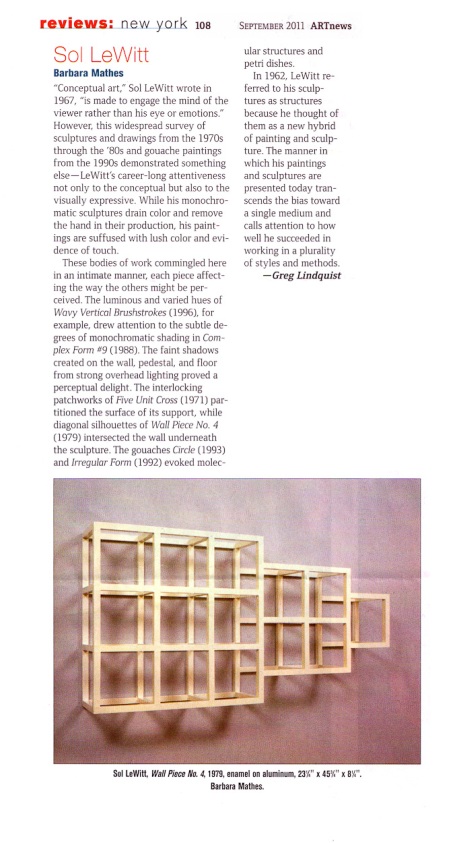Michael Strauss, Chairman of the board of Warhol Foundation, said in a Brooklyn Rail article, in response to Karen Rosenberg’s critical assessment of the Armory Show as claiming Warhol as the “Pope of Pop as patron saint of art fairs”:
“Lutz’s project is less a function of art fair mania than the further elaboration of a serious conceptual project he has been engaged in since 2006, beginning with his extensive series “Warhol Denied” in which he faithfully replicated in form and medium several Warhol paintings and sculptures (Brillo boxes silkscreened on plywood; self portraits and portraits of others silkscreened on canvas, etc.); sent them to the Andy Warhol Authentication Board with his own signature on the back; thereby sought and obtained a red ink “DENIED” stamp on the works from the Authentication Board indicating their lack of authenticity…”
Perhaps giving further validation to Lutz’s air of authenticity established by Strauss, a colleague painter at Jeff Koons’ studio told me Lutz also worked for Jeff Koons during the time in which he did the Denied Warhols.
Nonetheless, it was the spectacle of seeing people trying to maneuvre these large boxes that could hold a 15″ iMac. Some immediately collapsed the boxes, carrying them under arms, some used them to as carriers for smaller works purchased in the fair. I even got in an elevator with Chelsea dealer Zach Feuer carrying an assembled box to the parking deck. Maybe it just goes to show that anything literally packaged as free at an art fair while at the same fetishizing a topical art historical subject will go quickly. Within the first two or three hours of the preview on Wednesday afternoon all of the boxes appeared to have vanished and may or may not have been replenished for subsequent hours open to the general public.
The following are an image-based inventory of the works that stood out as I went through an extended weekend of fairs, bookended by Pier 94’s contemporary on Wednesday and Pier 92’s modern on Sunday.
Aside other forms of provocative spectacle was David Kramer’s installation (which could have incensed the purist painter) and an Oslo booth lampooning Mary Boone (whose validation Boone must have loved), there was some great painting at Victoria Miro: Korner, de Balincourt and Ofili (not pictured).
Also, a nice computer screen-sized, blaring Peter Halley (its door-sized counterpart was later discovered on Pier 92), David Humphrey squiggly pattern and Miko/Thayer warbling moving painting at Eleven Rivington.



















